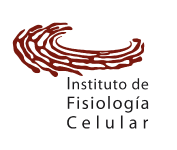Roles of Cholesterol and PtdIns(4,5)P<inf>2</inf> in the Regulation of STIM1-Orai1 Channel Function
Pacheco J; Bohórquez-Hernández A; Méndez-Acevedo KM; Sampieri A; Vaca L (2023). Roles of Cholesterol and PtdIns(4,5)P<inf>2</inf> in the Regulation of STIM1-Orai1 Channel Function ADV EXP MED BIOL 1422 :305-326
Calcium is one of the most prominent second messengers. It is involved in a wide range of functions at the single-cell level but also in modulating regulatory mechanisms in the entire organism. One process mediating calcium signaling involves hydrolysis of phosphatidylinositol 4,5-bisphosphate (PtdIns(4,5)P2) by the phospholipase-C (PLC). Thus, calcium and PtdIns(4,5)P2 are intimately intertwined two second-messenger cascades that often depend on each other. Another relevant lipid associated with calcium signaling is cholesterol. Both PtdIns(4,5)P2 and cholesterol play key roles in the formation and maintenance of specialized signaling nanodomains known as lipid rafts. Lipid rafts are particularly important in calcium signaling by concentrating and localizing calcium channels such as the Orai1 channel. Depletion of internal calcium stores is initiated by the production of inositol-1,4,5-trisphosphate (IP3). Calcium depletion from the ER induces the oligomerization of STIM1, which binds Orai1 and initiates calcium influx into the cell. In the present review, we analyzed the complex interactions between cholesterol, PtdIns(4,5)P2, and the complex formed by the Orai1 channel and the signaling molecule STIM1. We explore some of the complex mechanisms governing calcium homeostasis and phospholipid metabolism, as well as the interaction between these two apparently independent signaling cascades.



